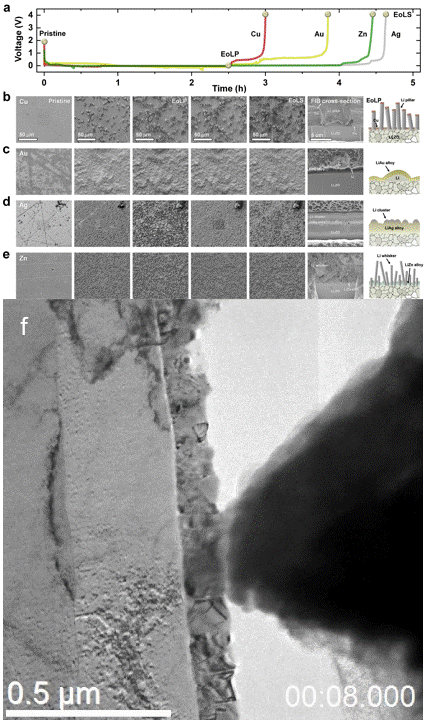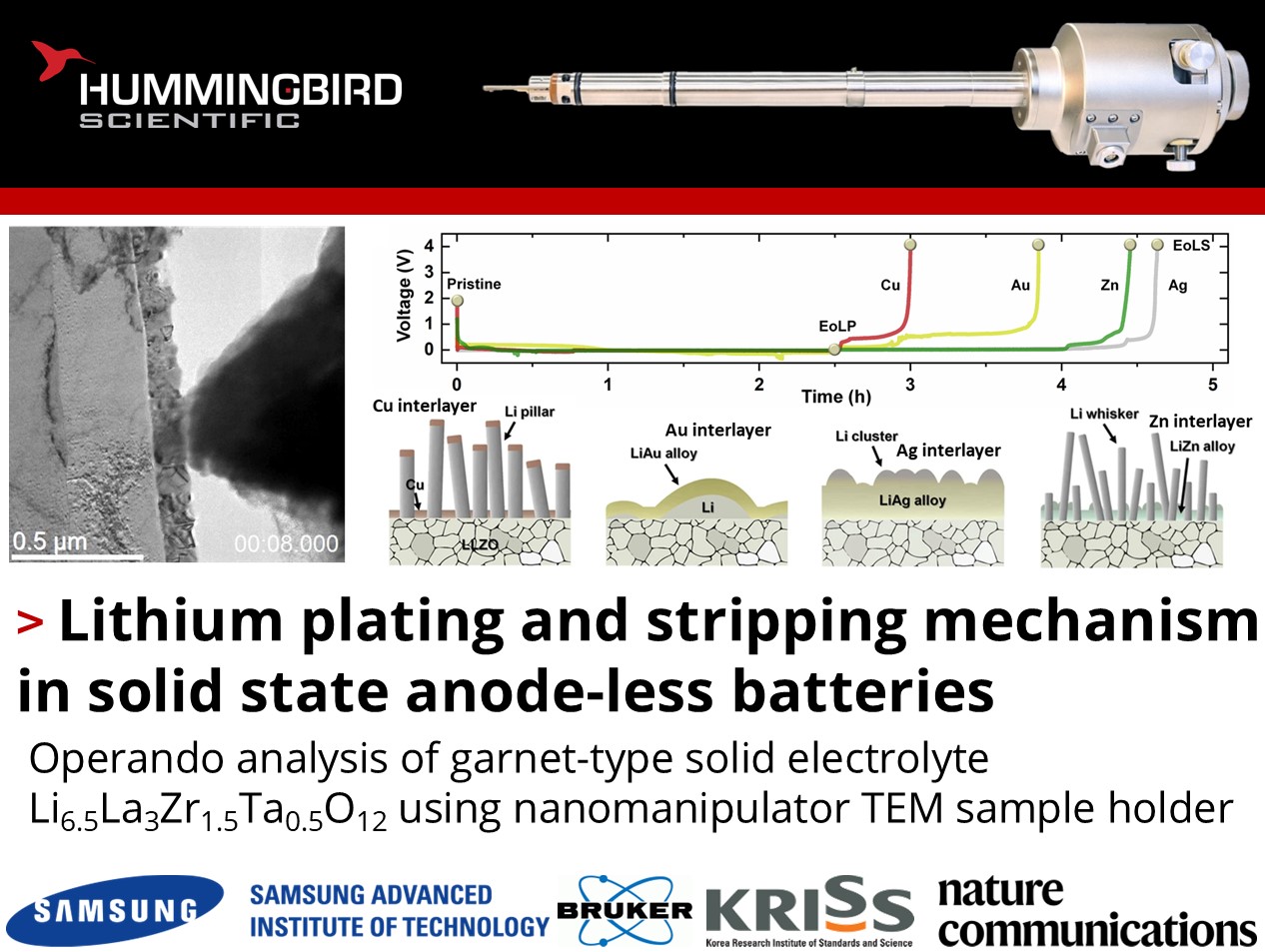How does metal interlayer material affect solid-state battery performance?
Dong-Su Ko, Changhoon Jung, and their colleagues at Samsung Advanced Institute of Technology, Bruker Korea, and Korea Research Institute of Standards and Science published work using their Hummingbird Scientific Biasing Manipulator TEM sample holder to characterize lithium plating and stripping mechanisms in metal-interlayer-inserted anode-less solid-state lithium metal batteries (AL-SS-LMBs). The team combined operando and post-mortem TEM, SEM, and XPS measurements to investigate the morphological, chemical, and microstructural changes during Li-metal deposition and alloying with various inserted metal interlayers.
a) Charge/discharge profiles and corresponding SEM images of (b) Cu, (c) Au, (d) Ag, and (e) Zn interlayer cells with schematics of the cross-sectional morphologies. f) In-situ TEM movie of the electrochemical reaction between Ag thin film and Li-coated tip. Copyright © 2025 Springer Nature Limited
With all metals but Ag, Li plating at the Li-metal alloy/solid electrolyte interface in layers, pillars, and whiskers prevented effective alloying and stabilization of plating/stripping processes. The Ag interlayer improved the interfacial stability by dissolving some Li and forming a solid solution, inhibiting unstable dendrite growth in the phase separated Li-Ag alloy microstructure. Li plating takes place on the surface, passing through the lithiated Ag interlayer without the loss of the contact between the solid electrolyte and metal interlayer. The work advances fundamental understanding of material selection for solid-state battery interlayer design to accelerate the development of solid-state batteries.
The Hummingbird Scientific Biasing Manipulator TEM sample holder enabled precise voltage control and operando nanoscale imaging, revealing dynamic phase changes and interfacial behavior critical to advancing solid-state battery technology.
Reference: Dong-Su Ko, Sewon Kim, Sangjun Lee, Gabin Yoon, Daeho Kim, ChaeHo Shin, Dongmin Kim, Jaewoo Lee, Soohwan Sul, Dong-Jin Yun & Changhoon Jung, Nature Communications 16 1066 (2025) DOI: 10.1038/s41467-025-55821-1
Full paper Copyright © 2025 Springer Nature Limited
View All News

